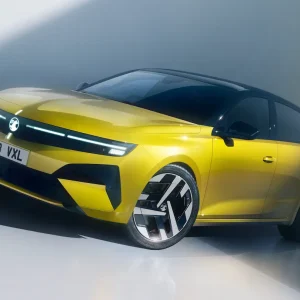Nissan has revealed its all-new NP300 Navara pick-up truck ahead of its debut at next month’s Frankfurt motor show and its on-sale date of January 2016.
The new model is powered by a new 2.3-litre diesel engine in two power outputs – 160hp and 190hp. While efficiency figures have not yet been released, Nissan claims the new engine is up to 24% cleaner than the outgoing 2.5-litre diesel.
The old 190hp 2.5-litre diesel engine produced 222g/km of CO2 and returned 33.6mpg. The new unit should therefore have a ballpark CO2 emissions figure of 168g/km, and return around 41mpg.
One of the Navara’s main rivals, Mitsubishi’s new L200 returns 42.8mpg and emits 173g/km of CO2 from its 178hp 2.4-litre diesel unit.
Nissan said the Navara will launch with the choice of two or four-wheel drive and the option of a six-speed manual or a seven-speed automatic gearbox.
The payload capacity of the 12th generation Navara is “in excess of one tonne”, Nissan said, with a more specific figure set to be revealed closer to the vehicle’s launch date. The L200’s gross payload is 1045kg.
The towing capacity is rated at 3500kg, matching the best-in-class capacities of Ford’s Ranger and Isuzu’s D-max.
Nissan is claiming a sector-best double cab load bay of 1578mm compared to the L200’s 1470mm, while the king cab’s load bed measures 1788mm in length.
Design-wise, the firm’s V-motion grille stands out at the front of the vehicle. Combined with boomerang-shaped LED daytime running lights this “provides distinctive styling cues” as it delivers a “rugged yet sporty overall style”, Nissan saiInside, the vehicle’s dashboard assembly has been redesigned from the ground up to create increased cabin space and a more open feel. Nissan claims the front seats have been engineered using technology inspired by NASA to improve cabin ergonomics.
Technology being introduced to the new Navara includes a visual parking aid – Around View Monitor – first introduced to the company’s crossover range and its Forward Emergency Braking system.
Other safety kit as standard includes cruise control, hill descent control, hill start assist, keyless entry, a rear-view camera and parking sensors.
According to Nissan, improving the vehicle’s refinement was a key element of the Navara’s development.
Nissan has also created a new five-link rear suspension unit for the double cab model, which should provide significantly improved ride comfort and handling, it said while king cab versions feature a “substantially updated” version of the leaf spring suspension design that was fitted to the previous generation Navara.
“Nissan pick-ups have often been the lifeblood of communities and a trusted work partner to businesses and tradespeople,” said Ponz Pandikuthira, director of light commercial vehicles for Nissan Europe.
“We’ve harnessed this experience and our customer feedback to develop the new Nissan NP300 Navara which sets a new benchmark for performance, refinement, convenience and running costs in the sector,” Pandikuthira claimed.
According to Society of Motor Manufacturer and Traders data, the Navara was the fifth best-selling pick-up of 2014 with the firm shifting 4533 units. Toyota, meanwhile, registered 8316 of its best-selling Hilux model last year.
Nissan’s decision to launch the Navara at the Frankfurt motor show – primarily a passenger-car car motor show – could indicate the firm is aiming to appeal to ‘lifestyle’ customers with the new model.
The fact the pick-up has more technology than the previous generation (and if you believe Nissan, more than any other model) could indicate it is going after would-be 4×4 owners more than ever before.
The SMMT says that pick-up sales are up by 20% year-on-year, and with new vehicles set to come out in the near future from pick-up sector debutants including Mercedes and Renault (whose models will be based on the Navara’s platform), it will be interesting to see whether Nissan can claw back any sales from its rivals.
Final specification, efficiency and pricing details are set to be announced closer to the vehicle’s launch date.





